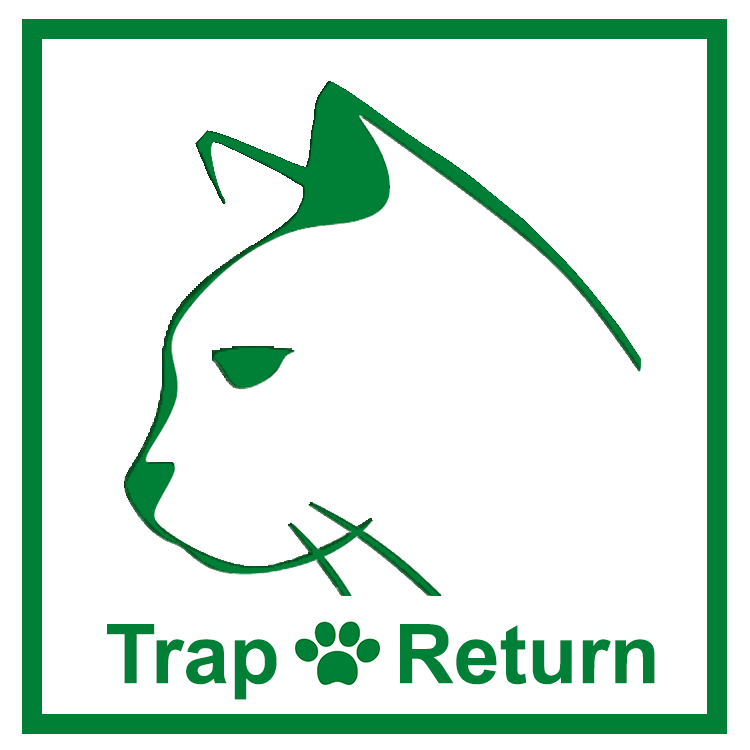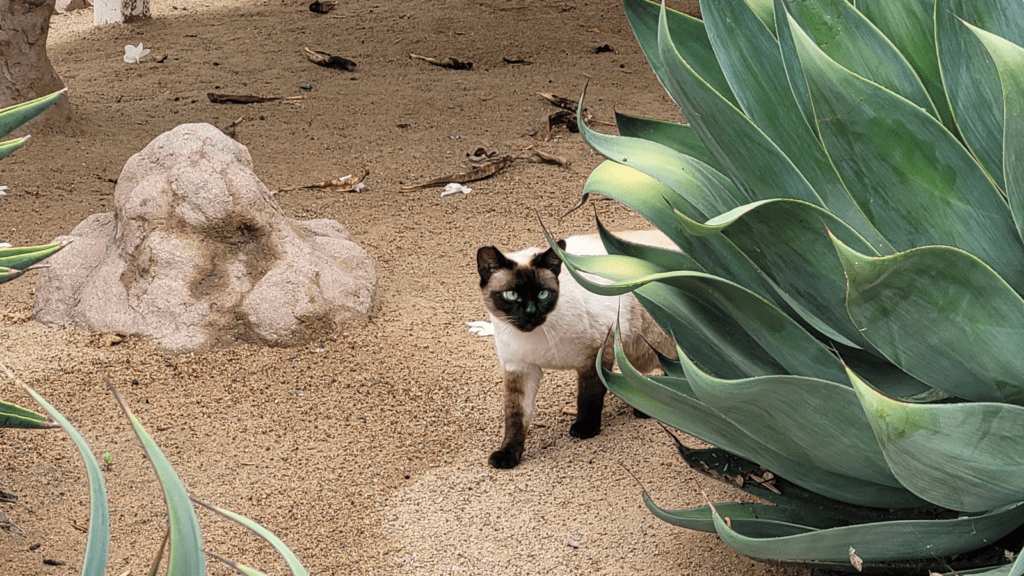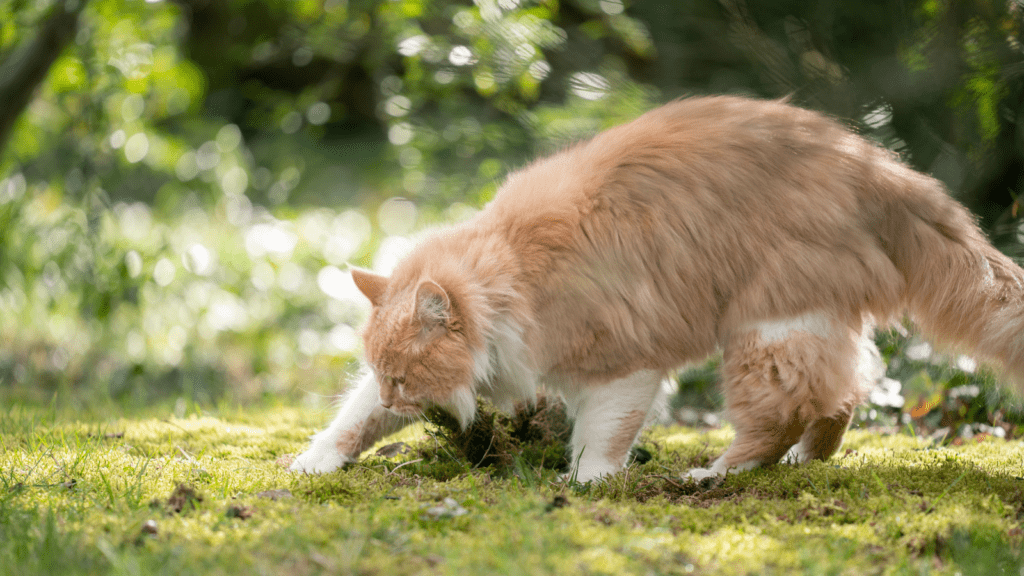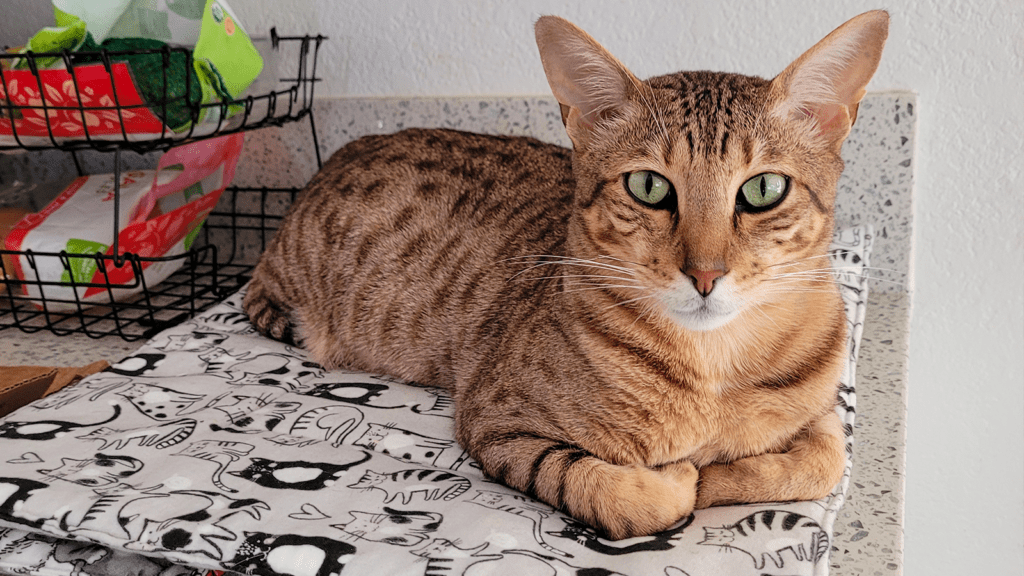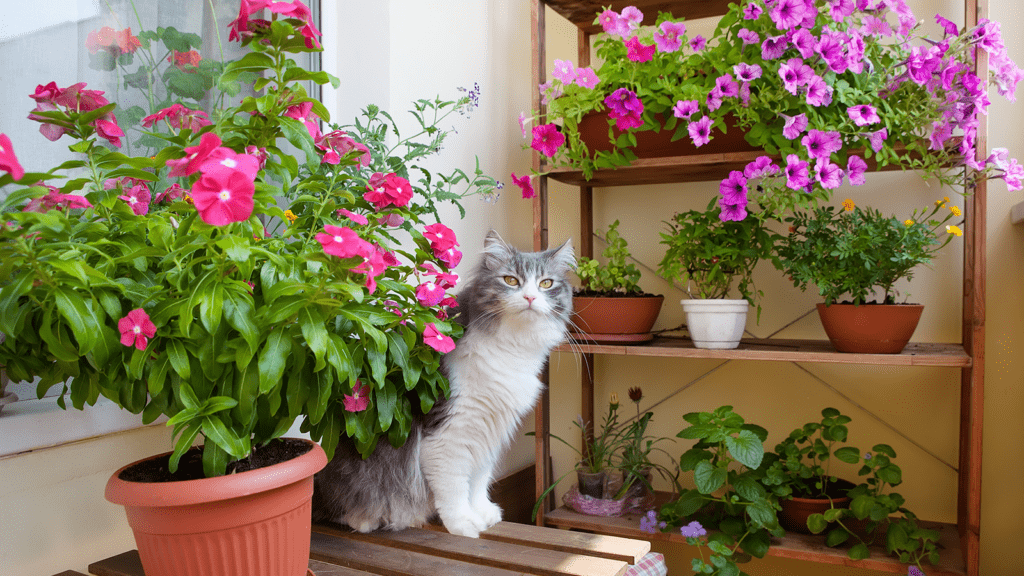
Cat Safe Plants
There are a variety of cat-safe indoor and outdoor plants on the market that both humans and cats love. Whether you’re looking for outdoor pet-friendly plants that are drought tolerant and low maintenance or hanging plants that are safe for your indoor cat, you can surely find gorgeous plants for your household!
An often-overlooked part of cat-proofing your house is to look at your plants. Many common houseplants are toxic to cats and can cause illness or even death if consumed. Lilies can even cause damage to cats who breathe or consume the pollen, making them even more dangerous.
Common plants safe for cats include Parlor Palm, Hoya, Peperomia, Fittonia, Money Tree (Pachira Aquatica), Echeveria, Graptopetalum, Sedum, Spider Plant, Catnip, and Cat Grass. Many of these cat-friendly plants are low maintenance and don’t require a green thumb to keep them alive.
In this article, we’ll share more about why humans and cats love these plants, along with a reminder about some houseplants you shouldn’t keep around your cats.
11 Cat Safe Plants
1. Parlor Palm
The Parlor Palm is a popular household plant and is known as an air plant for its air-purifying qualities. The parlor palm is a small palm variety that’s easy to grow in partial light to bright indirect sunlight. These common house plants enjoy moderate to high humidity levels and deep watering once the soil is dry.
Parlor Palms are cat-safe, non-toxic plants that are also a favorite amongst cats who eat houseplants. For the plant’s sake, it’s best to keep it out of the kitty’s reach! (source)
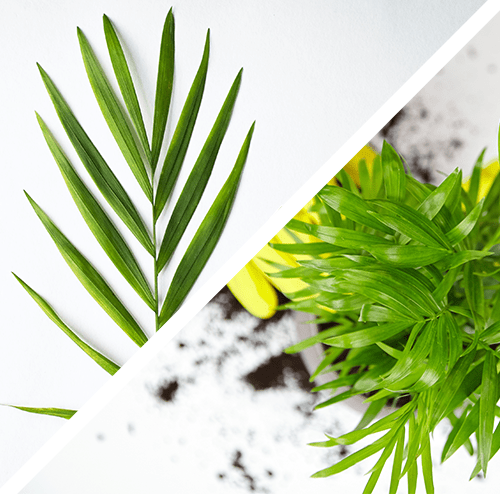
2. Hoya
There is a diverse range of hoyas on the market, even ranging in color from beautiful pinks and yellows to pure green. Hoyas are succulents, which means they store water in their leaves. Place your hoya in a sunny spot with direct sun and let the soil dry out completely between waterings.
Anecdotally, I’ve noticed my cats and dogs tend to avoid eating this kind of plant—but if yours do, you’ll have no need to worry since Hoyas are non-toxic. (source)
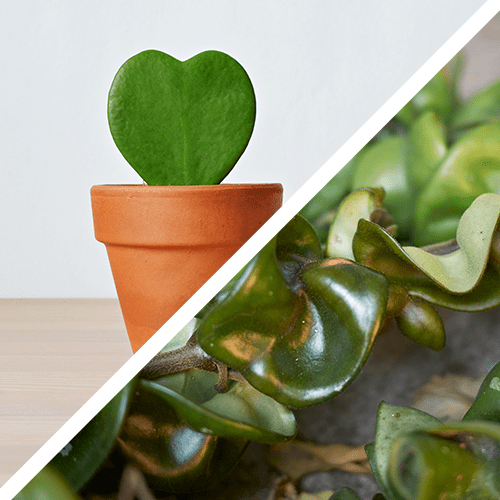
3. Peperomia
Peperomia plants are common indoor plants that come in different varieties. Watermelon Peperomia grows large, disk-like leaves, while a String of Turtles grows long, trailing stems with teeny-tiny foliage. Some of the more succulent Peperomia varieties have little folded leaves that look like taco shells! Peperomias can be finicky, depending on the variety. They tend to dislike water on their leaves, so try bottom-watering or watering from above at dirt level. Place Pereromias in a bright location with partial sunlight.
Peperomia is non-toxic to cats and are cat-safe houseplants. (source)
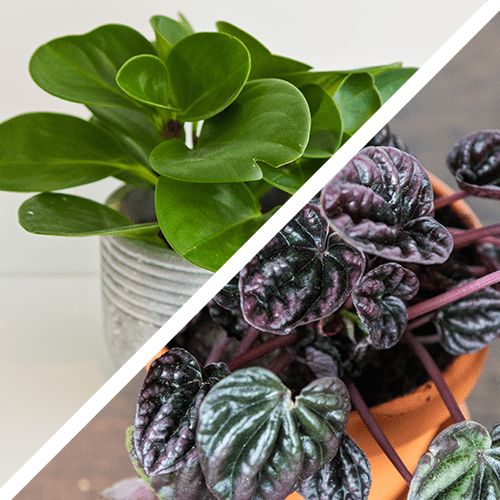
4. Fittonia
Fittonia plants, also called nerve plants, have vein-like patterns on foliage that can be white, red, or pink in color. These plants are dramatic about their watering schedule, but this makes it super easy to tell when they’re thirsty. If your plant’s leaves drop and it looks a little dead, don’t worry! Give it a good drink and, usually, it’ll be good as new in a few hours. Fittonia can handle low light conditions but prefers medium to bright indirect light or natural light. The brighter the lighting, the more beautiful veins on the nerve plant leaves will stand out, creating striking stripes.
These plants make great dining room table decorations and floral arrangements. Fittonia plants are safe for cats and non-toxic. (source)
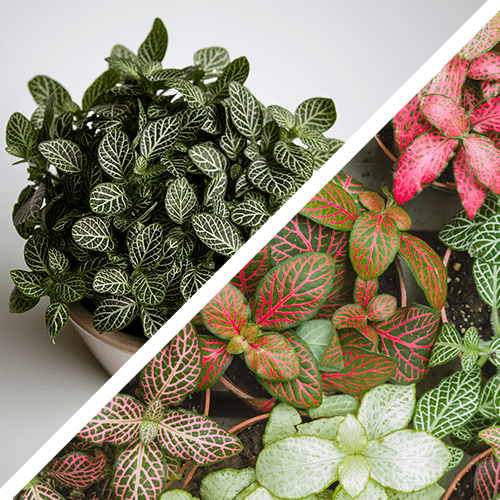
5. Money Tree (Pachira Aquatica)
The Money Tree is a common friendship plant that is often given for good luck. These plants are typically sold with three or more plants braided together. They’re unique and beautiful, with thick trunks and so many leaves! Money trees store water in their trunks and tolerate neglect well. However, they’ll die if overwatered. Plant them in soil that drains quickly and water until you notice water coming out of the drainage hole. Another tip for these plants—check them for rubber bands beneath the soil level! Sometimes, they’re left on the plant, which can kill them as they grow. Simply cut off the rubber band, and your plant will grow several feet tall.
Money Trees are cat-safe and non-toxic. (source)
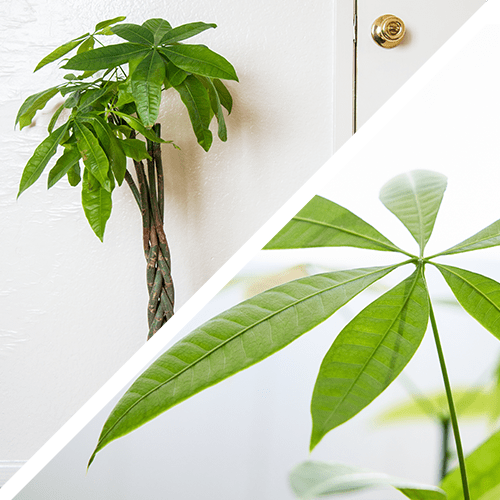
6. Echeveria
Echeverias are succulent plants with beautiful rosettes. Like many on this list, they come in a wide variety of colors and shapes. Some popular varieties include “Perle von Nurnberg,” “Black Prince,” and “Lola.” These plants enjoy bright sunlight, so keep them where they have direct sunlight, such as a southern windowsill or beneath a grow light. Water them deeply but infrequently, allowing the soil to dry out completely between waterings.
Echeveria succulents are cat-safe and non-toxic. (source)
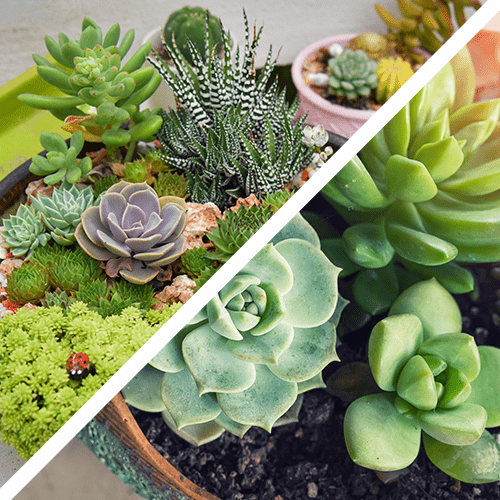
7. Graptopetalum
Graptopetalum is a pet-friendly plant that is very similar to Echeveria, and the two are even commonly crossbred. They tend to have plumper leaves than Echeveria but grow in the same rosette shape. They also require very similar care. Give them direct sunlight on a sunny windowsill and watch them thrive, even if you forget to water them for a couple of weeks.
Graptopetalum succulents are cat-safe and non-toxic. (source)
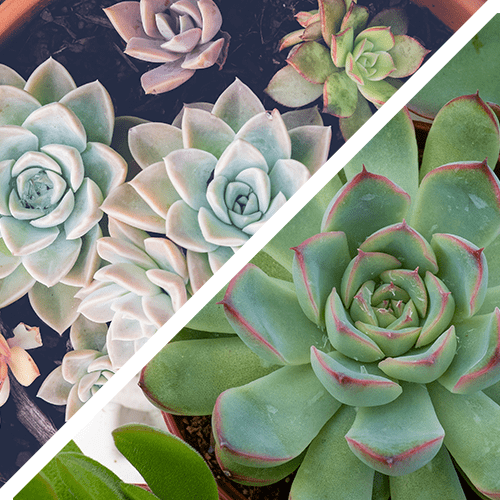
8. Sedum
Sedums are a popular choice for outdoor ground cover because many varieties prefer full sun and are incredibly cold-hardy. However, some do well indoors when given the right conditions. The burro’s-tail and jellybean varieties are some of the most beautiful plants! As with the succulents above, sedums like bright light and deep, infrequent watering.
Sedum succulents are cat-safe and non-toxic. (source)
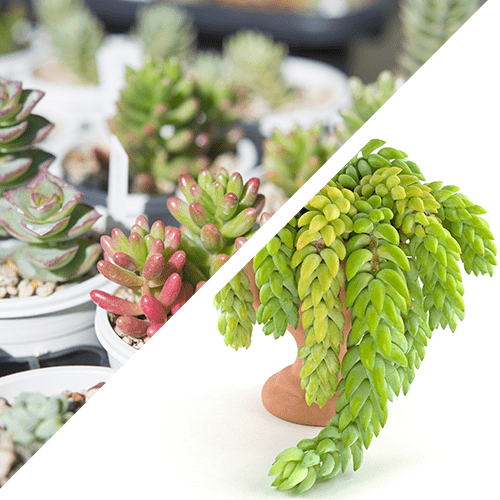
9. Spider Plant
The spider plant is a type of grass that’s incredibly easy to grow. They propagate through sending offshoots, which bloom for a short period and then begin to grow little baby plants. In their natural habitat, these plant pups would dig their roots into the ground and continue to grow and spread. In your home, you can choose to leave them hanging, trim them to grow more plants, or even feed them to your cats!
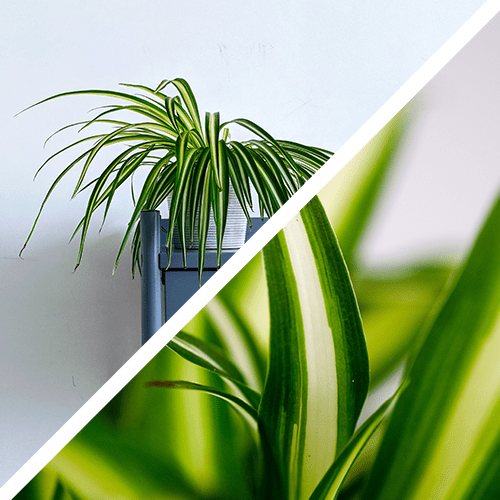
Spider plants are completely cat-safe, but the plants themselves won’t be safe from your cat unless you keep them high up. This is because they actually act as a mild hallucinogenic for cats—and we know how kitties feel about their drugs.. (source) Place spider plants in hanging planters and watch this beautiful plant grow long and green.
10. Catnip
Speaking of cat drugs, you might also try your hand at growing some catnip at home. You’ll need an eight-inch pot, a sunny window (or grow lights), and some well-draining soil.
Water it when the soil is dry, prune back flower buds to encourage foliage growth, and pinch off a few tiny green leaves now and then to give your cat a nice, fresh treat! Homegrown and fresh catnip will be more potent than the kind that’s store-bought.
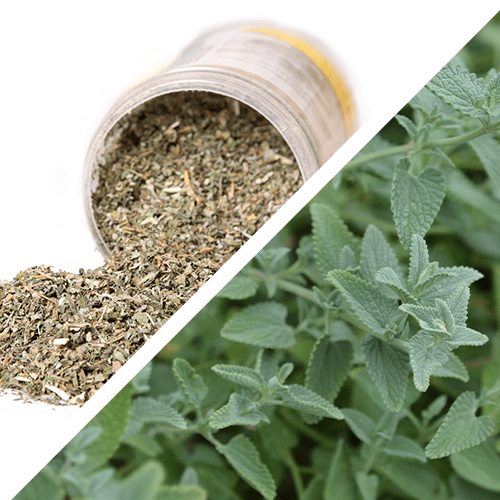
This is one of the most popular plants safe for cats. It’s a member of the mint family, and it contains nepetalactone, which is a cat attractant.
Feel free to leave the plant in your cat’s reach, but take it away if you notice them devouring it and vomiting afterward. Some cats can limit themselves, while others may have more trouble. It’s best to help moderate your cat’s intake—while the plant is safe, large quantities may upset your cat’s stomach, just like a kid eating too much candy.
If you grow catnip outdoors, you might attract strays to your garden, and they might have a bite as well! Most cats love catnip and will chew on the leaves or roll around in it.
Catnip can be purchased in seed or plant form, depending on how fast you want your kitty to get it and if you prefer to grow it yourself or avoid the wait.
11. Cat Grass
Cat grass is another plant you can grow just for your cat. It’s incredibly simple—just plant the seeds, keep the soil moist, and watch it grow! Cat grass is typically sold in seed form rather than as a full-grown plant.
If your grass appears light tan or yellow in color, it either needs more water or more light.
Cat grass is a great source of fiber, and it can help with digestive issues. However, too much cat grass can cause an upset stomach.
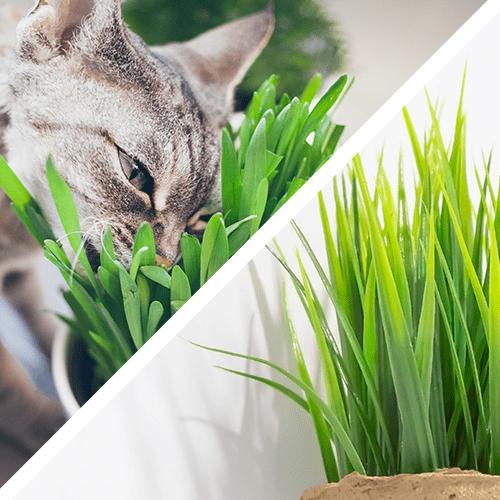
13 Plants That Are Toxic To Cats
When it comes to plants, there are some that are extremely toxic to cats and pets. If your cat consumes one of these plants, you might need to immediately call a pet poison helpline or your emergency veterinarian. Even though some of these beautiful plants are very common, it’s crucial that all cat owners and pet owners are aware of toxic plants.
Here are 13 very common houseplants that are toxic to cats:
- Ivy – Both English ivy and Irish ivy are poisonous to cats. If ingested, they can cause gastrointestinal issues. Ivy is toxic for cats because it contains saponins, which can cause problems like vomiting and diarrhea in cats.
- Lilies – All parts of the lily plant are poisonous to cats—please never keep them in your home! Even a small amount of lily can cause severe kidney damage in cats. If you think your cat has ingested any part of a lily, please contact your veterinarian immediately.
- Marijuana – Marijuana contains a toxin called tetrahydrocannabinol (THC), which is poisonous to cats. If your cat ingests marijuana, it may experience vomiting, incoordination, and slow heart rate.
- Peace lily – The Peace lily is toxic for cats because it contains a toxin called saponin. This toxin can cause gastrointestinal problems like vomiting and diarrhea in cats.
- Kalanchoe – This succulent plant is toxic to cats because they contain a substance called saponin. This toxin can cause gastrointestinal problems like vomiting and diarrhea in cats.
- Aloe Vera – Aloe Vera is toxic for cats because it contains a substance called saponin. This toxin can cause gastrointestinal problems like vomiting and diarrhea in cats and may be harmful to the cat’s liver and kidneys.
- Monstera – Monsteras are toxic for cats because they contain a toxin called oxalate. This toxin can cause gastrointestinal problems like vomiting and diarrhea in cats.
- Pothos – Pothos are toxic for cats because they contain a substance called saponin. This toxin can cause gastrointestinal problems like vomiting and diarrhea in cats.
- Jade – Jade plants are also poisonous to cats. If ingested, they can cause vomiting and diarrhea. Jade plants contain insoluble calcium oxalates, which can be very harmful to your cat if consumed.
- Snake Plant – Snake plants are not actually poisonous to cats, but they can cause gastrointestinal issues if your cat ingests them.
- Sago Palm – All parts of the sago palm are poisonous to cats. If ingested, they can cause liver failure.
- Dumb Cane – Dumb Cane is another plant that contains insoluble calcium oxalates. If your cat ingests this plant, they may experience vomiting, drooling, and difficulty swallowing.
- Tulips – All parts of the tulip plant are poisonous to cats, including the bulbs and petals. Ingesting any part of a tulip can cause vomiting, diarrhea, and drooling.. If ingested, they can cause gastrointestinal issues.
If you think your cat has consumed any of these plants, please contact your veterinarian immediately. These plants can cause serious health problems in cats and may even cause death.
Of course, this list isn’t exhaustive. Please check the ASPCA’s toxic and non-toxic plant list before buying a new plant if you have cats. They also list plants that are toxic to dogs and horses. It’s a fantastic resource for pet owners!
